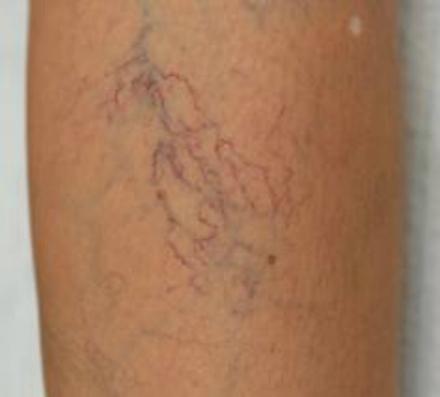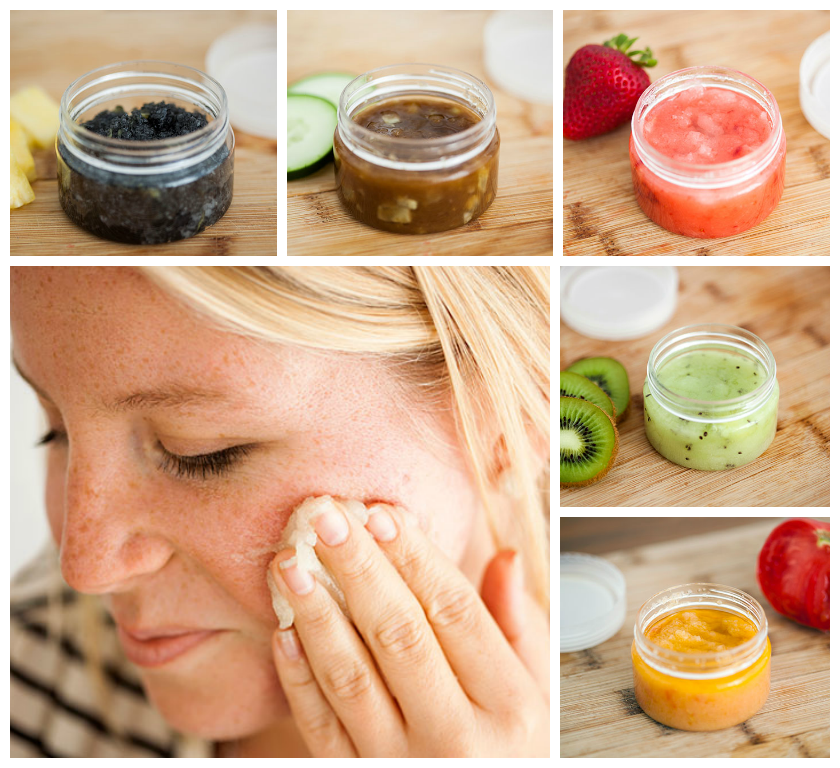
1. Spider Veins
If the valves inside your blood vessels become weak (whether from age or genetic predisposition) and are unable to pump blood back to your heart efficiently, “the blood pools and causes the veins to enlarge,” said Dr. Robert J. Min, chair of radiology. That
causes capillaries close to the skin’s surface to show up as little red squiggles, most commonly on the legs. And those, friends, are spider veins.
What Works
Sclerotherapy: Using a tiny needle, a doctor injects the spider veins with a medicated solution that “causes them to collapse and permanently disappear,” said Dr. Fredric Brandt, a dermatologist in Miami and New York. You’ll probably need two to three sessions to eradicate a spider vein fully. Cost: $200 and up per treatment.
Vascular laser: “The blood inside the veins absorbs the wavelength from this laser, creating heat, which contracts the veins,” said Richard G. Glogau, a clinical professor of dermatology at the University of California, San Francisco. Very small spider veins
benefit most; you’ll need several sessions to see a difference. Cost: $200 and up per treatment.
What Doesn’t Work
Keeping your legs uncrossed (crossing them is said to cause spider veins). “Unless they’re crossed 24 hours a day, the effect is minimal,” said Dr. David Goldberg, a dermatologist with practices in New York, New Jersey, and Florida.
Quick Cover-Up
Neutralize redness with yellow-based body makeup, says Lusine, a makeup artist in Los Angeles. Set with translucent powder to keep it in place
2. Stretch Marks
When skin gets stretched too fast, as it can when you gain weight quickly, such as during pregnancy, or if you went through a growth spurt as a teenager, “the collagen and elastin fibers in the dermis rupture,” said clinical professor Richard G. Glogau.
The result is scars deep within the skin―stretch marks. New ones are red or dark brown, because the skin becomes inflamed when the fibers break. (You might also notice a change in texture, as if your skin has little divots in it.) With time, most stretch marks
lighten in color.
What Works
Pulse dye laser (for newer stretch marks): The light from this laser is absorbed by the pigment in the irritated area, which heats the blood vessels and makes the vessel walls collapse, said dermatologist Dr. David Goldberg. The color is reduced significantly, so
marks are much less obvious. (But divoting will still be apparent.) You’ll need about five treatments, spaced one month apart. Cost: $500 to $800 per treatment, depending on the size of the affected area.
Excimer laser (for older marks): The beam “increases pigment production, so eventually the silver or white lines become the color of the rest of your skin,” Goldberg said. This type of laser requires 10 to 20 treatments, spaced about two weeks apart. Cost: $200 to $700 per treatment.
What Doesn’t Work
Over-the-counter stretch mark creams, which claim to rebuild collagen but don’t.
Quick Cover-Up
A self-tanner “helps minimize the look of both new and older marks,” said makeup artist Lusine. For the most even coverage, exfoliate the area before applying.
3. Cellulite
Those bumps and dimples are all about genetics (thanks, Mom and Dad!). Contrary to what many people think, cellulite is nothing more than regular fat. But if you’re predisposed to cellulite, that fat bulges forward between the bands of tissue that connect your skin to your muscles, said Dr. Alan Gold, a plastic surgeon in Great Neck, New York. Excess weight can cause cellulite to become more prominent, due to the extra fat under the skin, but even thin people can have it.
What Works
Endermologie: A technician runs a vacuum-like suction tube over your skin and follows that with a heavy-duty massaging roller. The bands under the skin are stimulated and stretched temporarily, causing swelling and thickening, which plumps the skin so dimples appear smoother. You’ll need a treatment every eight weeks. Cost: $150 and up per session.
Cellulite creams and gels: In the short term, creams and gels can make cellulite appear less obvious. Ingredients such as caffeine make the skin swell, and polymers form a light film on the skin as they dry, pulling it smooth. You need to apply daily, since you
remove the product―and its effects―when you shower. Cost: From $10 at drugstores to more than $100 at department stores and spas.
What Doesn’t Work
Mesotherapy, in which a doctor injects saline or some other liquid into the skin to disperse fat. Liposuction is a bust, too: It sucks out fat but not the bands of tissue that create the bumpy appearance.
Quick Cover-Up
Try a body bronzer or a tinted self-tanner, even on darker skin, to visually smooth out the look of dimples.
4. Scars
As skin heals from a wound, it can produce too much collagen and a scar forms. The tendency to scar is genetic, so there’s not much you can do to prevent scars, though you can minimize the effects. Hypertrophic scars, the most common kind, are raised but don’t extend past the borders of the original wound. Keloids are raised but grow beyond the wound’s edges; people of African descent most often suffer from them. Depressed scars, like those from acne, are exactly that―indented.
What Works
Silicone products: A sheet of silicone placed over a hypertrophic or keloid scar (after the wound has healed) or a cream, such as Scar Fade, rubbed in daily “can make scars stop overproducing collagen and become permanently flatter,” said Foad Nahai, president of the International Society of Aesthetic Plastic Surgery. Sold over the counter, silicone products, which must be used consistently for several months, work on new and old scars. Cost: About $20 for sheets; about $10 for Scar Fade.
Fraxel laser: Best for depressed scars, this laser targets pinpoint-wide areas of skin, resurfacing the top and boosting collagen production underneath. After several sessions, indented scars should be leveled off. Cost: $500 and up per treatment.
What Doesn’t Work
Rubbing in vitamin-E oil.
Quick Cover-Up
Dab on a creamy, pigment-rich concealer that matches your skin and pat it into the scar to blend the edges. Brush on a bit of translucent powder to set the concealer, said makeup artist Lusine. (A very big keloid, however, will still be visible, even with
concealer.)
Source: Fox news





















